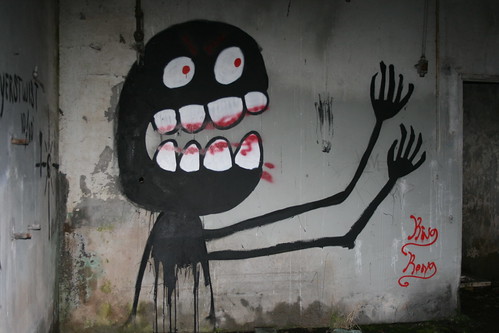The History of Mental Institutions
Prior to 1844, individuals who were mentally ill were viewed as a danger to society and were hid at all costs. A lack of knowledge about mental conditions and resources to deal with the side effects of such illness lead to a general phobia of those who were mentally handicapped. It wasn’t until the mid-19th century that education about the conditions of mental institutions was truly acknowledged. As a result, many new mental institutions were built boasting maximum privacy for patients under the Kirkbride Plan. However, the idea of “treating” those with mental conditions soon fell through, and these asylums and mental institutions soon became notorious for abuse and neglect. By the end of the 20th century, antipsychotic drugs propelled a movement of eliminating institutionalization for the mentally ill. This idea expanded throughout the year 2000, at which point most of the Kirkbride buildings were closed and no longer operable.

Worst Mental Institutions of All Time
The nature of patients and the abuse/neglect that took place in historical mental institutions is almost insurmountable. Unfortunately, many unfortunate patients fell victim to some of the worst mental institutions of all time, including the following:
Danvers State Hospital
Built in 1878, the Danvers State Hospital (aka the State Lunatic Hospital at Danvers) was known for its characteristic overcrowding and dark conditions. Constructed for only a mere 500 patients, this facility held over 2,300 at it’s peak of operation in the 1940s. Not only did doctors use electroshock therapy to keep patients in line, but Danvers is also rumored to be the birth place of the lobotomy procedure. Built on a plot of land once owned by John Hathorne, one of the most unforgiving Salem Witch Trials judges, the facility was closed in 1992 and burnt down shortly thereafter.
The Athens Lunatic Asylum
Also known as “The Ridges,” the Athens Lunatic Asylum is considered to be one of the most haunted places on Earth. In 1987, the body of a deceased female was found in a cell that was locked from the inside. The body left a stain that cannot be removed, and the silhouette remained ever since. Interestingly enough, sexual ills were the main cause of death for both male and female patients at this facility.
Pilgrim Psychiatric Center
Known for it’s massive size, the Pilgrim Psychiatric Center held a whopping 14,000 patients throughout the 1950s. This facility even invested in it’s own fire house, power plant, and working farm. Originally based on a more relaxed form of treatment, abuse began to evolve as the patient population grew. Lobotomies, electroshock therapy, and drug-induced comas were common at this institution.
Topeka State Hospital
In 1913, the state of Kansas ruled it just for epileptics, criminals, and the insane to be subject to castration. From this time until 1961 (when the practice was rendered illegal), over 3,000 citizens were rendered infertile from this practice. Most patients received the procedure at the Topeka State Hospital. Reports about patient abuse had run rampant about this hospital since the early 1900s, when it was rumored that some patients had been strapped down so long that their skin had grown over the straps.
Bethlem Royal Hospital
In addition to the well-known American asylums, the Bethlem Royal Hospital in London was the world’s oldest mental institution. Treating patients since 1357, this hospital was known for its atrocious conditions, including a public “freak” show and granting visitors permission to poke caged patients with sticks.
Beth Farris is a psychologist and guest author at BestPsychologyDegrees.org, a site with guides to top-rated psychology degree programs online.
